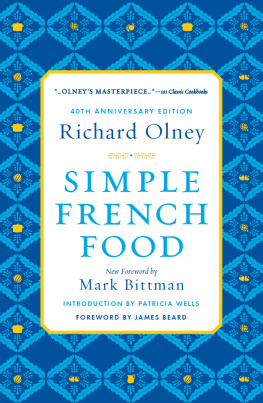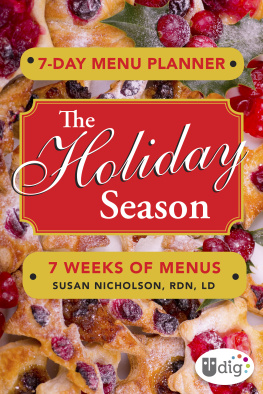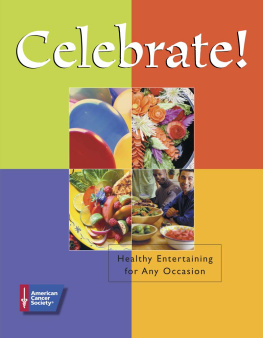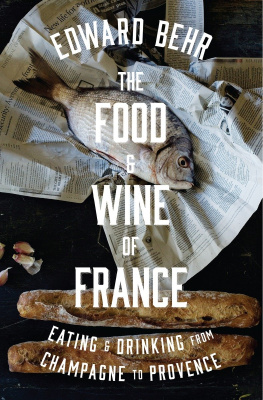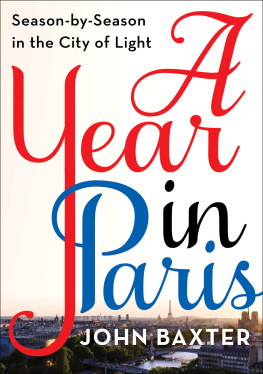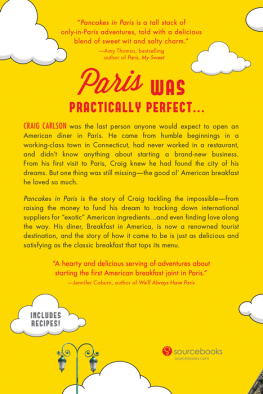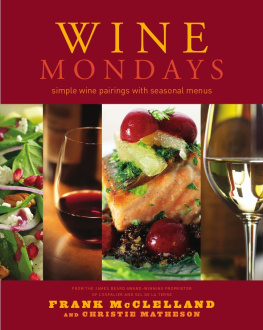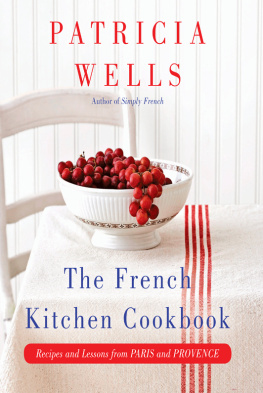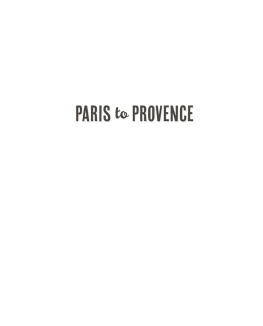About the Author
Richard Olney was born and raised in Iowa, one of eight children. After moving to a Parisian suburb in 1951 and then buying a run-down property in Provence, Olney settled in France permanently. Chief consultant to the Time-Life Good Cook series, Olney was author of eight books, including Simple French Cooking and Lulus Provenal Table. He passed away at his Provenal home in 1999.

Two Formal Autumn Dinners
with appropriate wines
MENU I ( FOR 6 )
CRAYFISH MOUSSE WITH CHAMPAGNE
[ MOUSSE DECREVISSES AU CHAMPAGNE ]
A champagne blanc de blancs,
either effervescent or nature

RAVIOLI OF CHICKEN BREASTS WITH FINES HERBES
[ PELLMENES DE BLANCS DE VOLAILLE AUX FINES HERBES ]
A dry but full-bodied white wine:
Riesling or white Burgundy
(Corton-Charlemagne, Clos des Mouches,
Puligny-Montrachet, etc.)

ROAST LEG OF VENISON WITH POIVRADE SAUCE
[ GIGUE DE CHEVREUIL A LA SAUCE POIVRADE ]
A robust red wine: Ctes-du-Rhne
(Chteauneuf-du-Pape, Hermitage,
Cte-Rtie) or Burgundy
(Nuits-Saint-Georges)

SWEET POTATO PUREE
[ PUREE DE PATATES DOUCES ]

ENDIVE AND LAMBS LETTUCE SALAD
[ SALADE DENDIVES ET MACHE ]

PONT LEVEQUE CHEESE
[ FROMAGE DE PONT LEVEQUE ]
A finer and older wine than the preceding
but in the same spirit

MOLDED COFFEE CUSTARD
[ CREME RENVERSEE AU CAFE ]
A champagne demi-sec or a Vouvray of respectable age


The crayfish mousse and the poivrade sauce served with the venison belong to a realm of restaurant cooking that unhappily is of the past. Restaurants today capable of serving either may be counted on the fingers of one hand; for such dishes to be practicable, such elements as game stock or half-glaze, fish fumet, calfs-foot jelly and mirepoixplus a number of competent workersshould automatically be at hand. Today restaurants often serve poivrade sauces that are basically boiled-up, flour-thickened mixtures of vinegar, pepper, water, and bouillon cubesequivalent recipes have even appeared in more or less respectable French publications. It is not surprising that la grande cuisine has so many detractors. I can only hope that readers will try these recipes once before deciding that nothing is worth that much trouble and, for those who cannot afford such a heavy expenditure of time, that one or another of them be incorporated into simpler menus.
A roast leg of venison needs a sauce, but may obviously be accompanied by any of a number of very simple sauces (for instance, the roasting pan may simply be washed out with Madeira and the reduction finished with heavy cream). Currant jelly is often added to game sauces.
A sweet potato pure is hardly the usual French fare, but in this context its delicately sweet flavor and light texture are more satisfactory than the traditional heavy chestnut pure.
The juxtaposition of hot and cold, of textures, flavors and colors, follows a logical pattern, and a rich, heady cheese finds its perfect expression here (although many wine lovers prefer, no matter what the circumstances, to nibble at an anonymous cheese in order to best savor the wine). A wine powerful enough not to suffer by comparison with that designed to accompany the venison is, by the same token, able to support a Pont lvqueone of the soft fermented cheeses most easily bought in good condition, neither too salty nor smelling of ammonia. Its delicacy of flavor comes often as a surprise after the sometimes rather terrifying odor.
The basic preparations for the poivrade sauce should be begun the preceding day; it would be a good thing to treat the family to a pot-au-feu a day or so in advance in order to have a good stock on hand. The dessert and the mousse may be finished and forgotten on the morning of the chosen day, and the ravioli may be prepared ahead of time. The final preparations, then, consist only in poaching and gratining the ravioli, roasting the leg of venison, finishing the sauce and preparing the sweet potato purein short, precisely the same amount of time and work involved as if one were to insert some prepared frozen food in the oven for a first course and serve a roast beef, mashed potatoes and gravy afterward.
The ravioli, the roast and the sweet potatoes should all be put into the oven just before the meal beginsthat is to say, about twenty minutes before the ravioli are to be served and an hour before the roast. Ordinarily the ravioli should be finished in an oven less hot than that at which the roast should be begun, but that is not too seriouswatch it carefully, and when the gratin is perfect, remove it from the oven. If the cream remains in large part unabsorbed, place the dish over a gentle heat on top of the stove for a few minutes. If your oven is not large enough to take both the gratin and the roast, start the former ten minutes earlierit may be kept in a warm place until ready to serveand the roast ten minutes later. Encourage your guests to linger over each coursea pleasure, as long as there is no scarcity of wine.
THE CRAYFISH MOUSSE
Crayfish abound in American streams, but are little eaten. Like lobsters, they must be alive when cooked, and they rank among the very great delicacies.
Writers at the turn of the century were already bitterly complaining that French streams were rapidly being emptied of crayfish. Today the French market is supplied by importations from Italy, Holland, Germany or Poland.
The white wine used in cooking the fumet should be of good quality (I most often use a Pouilly-Fum), but, unlike the champagne, which remains unaltered by cooking, it need not be of the class of great wines.
If calfs-foot jelly is preferred to commercial gelatin the foot need only be parboiled, rinsed and put to simmer in water, covered, for seven or eight hours. The resultant jelly, cleansed of all fat, replaces the water in the fish fumet. If, on the other hand, one were to omit the fumet and the jelly from the preparation, the velout might be replaced by a stout bchamel to which a tablespoon of dissolved gelatin has been added.
Crayfish Mousse
Mousse dEcrevisses au Champagne
cup
2 dozen good-sized, lively crayfish
salt, tiny pinch of Cayenne
1 cup dry white wine


